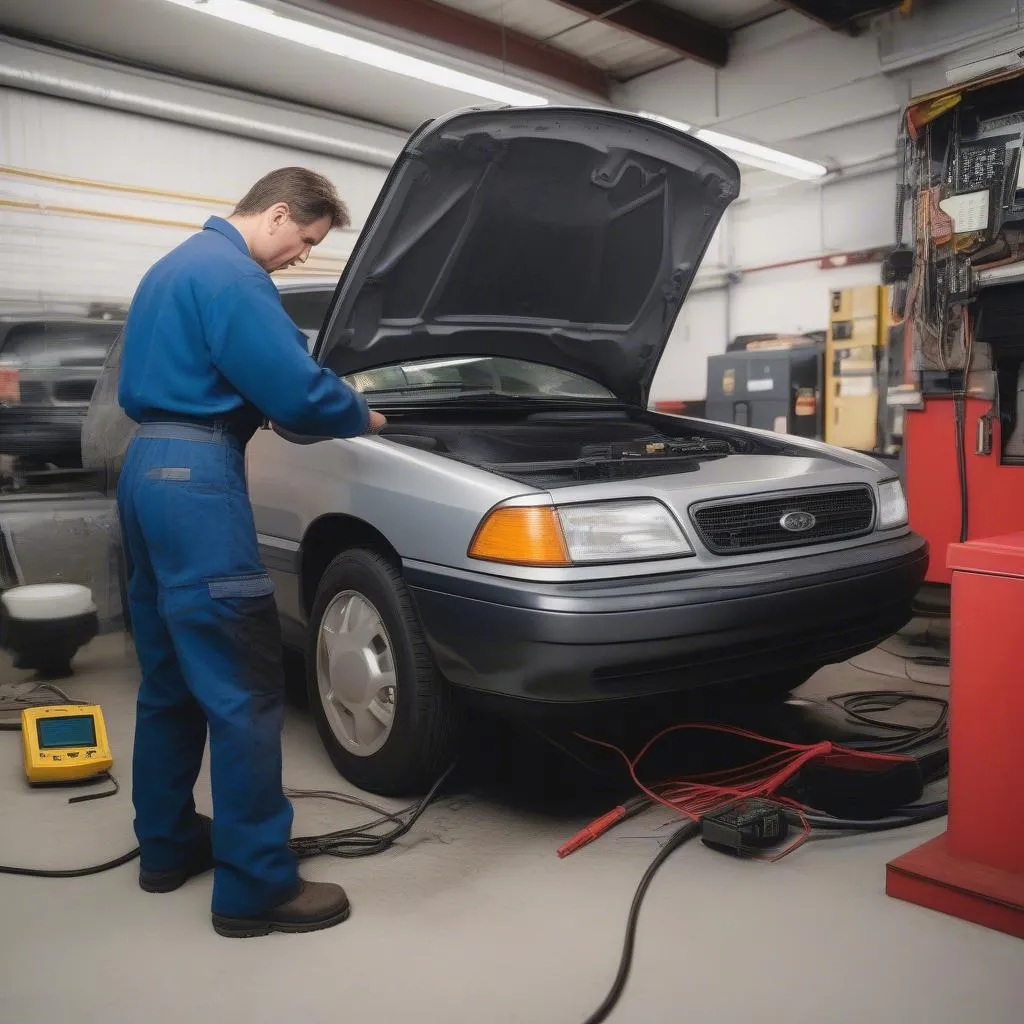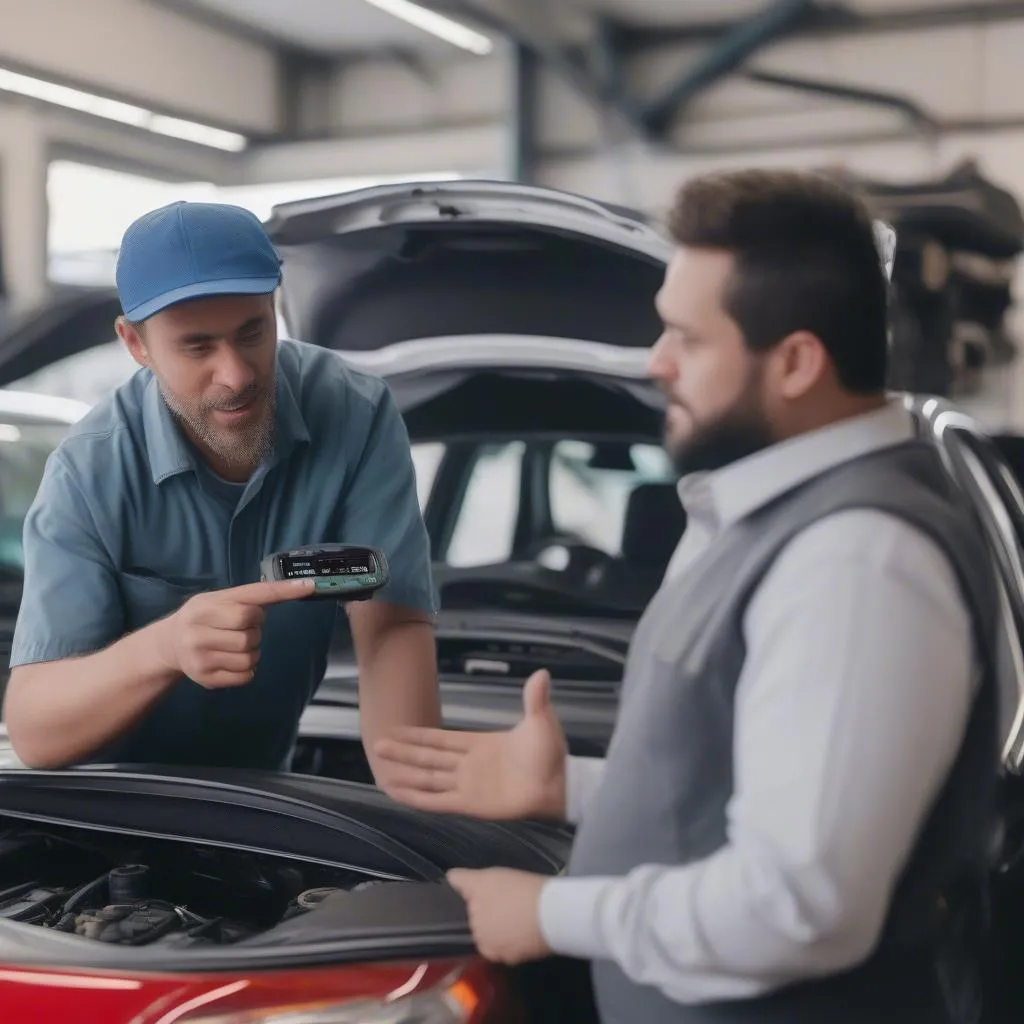Imagine this: you’re cruising down Highway 1 in California, the Pacific Ocean breeze whipping through your hair, your 1996 Ford Mustang rumbling contentedly. Life is good, right? But then that dreaded “Check Engine” light blinks on, casting a pall over your sunny drive. You pull into a garage in San Francisco, and the mechanic utters those cryptic words: “It might be your emissions, did you complete the OBD drive cycle?”
Confused? Don’t worry! This is a common scenario for many car owners, and understanding the “Emissions Drive Cycle Obd 1996” can save you a lot of headaches (and repair costs!).
What Does “Emissions Drive Cycle Obd 1996” Even Mean?
Let’s break it down, starting with the basics.
- OBD (On-Board Diagnostics): Think of this as your car’s internal health tracker. By 1996, OBD II systems were becoming standard, constantly monitoring your engine and emissions systems. When it detects a problem, it triggers that pesky “Check Engine” light and stores a specific trouble code that mechanics can read using an OBD scanner.
- Emissions: This refers to the gases your car releases into the atmosphere. The Clean Air Act of 1990 mandated stricter emissions standards for vehicles sold in the US, and your car’s OBD system plays a vital role in ensuring it meets those standards.
- Drive Cycle: This is where things get interesting. To check if your car’s emissions control systems are working correctly, the OBD II system needs to run a series of tests. But it can’t do that while you’re idling in your driveway. It needs to observe the systems under various driving conditions, like accelerating, cruising at highway speeds, and idling after a cold start. This sequence of driving conditions is your car’s “drive cycle.”
So, “emissions drive cycle OBD 1996” essentially refers to the specific driving procedure your 1996 or newer vehicle needs to go through for its OBD system to fully test its emissions components.
Why Should You Care About Your Car’s Drive Cycle?
Here’s the deal: if your car hasn’t completed its drive cycle, the OBD II system might not have all the information it needs to accurately diagnose an emissions-related problem. This means:
- Inaccurate Diagnosis: You might end up replacing perfectly good parts because the incomplete drive cycle led to a false positive trouble code.
- Failed Emissions Test: In many states, passing an emissions test is mandatory for vehicle registration. An incomplete drive cycle can lead to a “false fail.”
Understanding the Importance of the Drive Cycle: A Mechanic’s Perspective
“I’ve seen countless drivers frustrated because their ‘Check Engine’ light stays on even after repairs,” says John Smith, a veteran mechanic in Chicago. “Often, it’s because they haven’t completed the specific drive cycle their car needs to reset the OBD system. It’s crucial to understand that each make and model can have a slightly different drive cycle.”
Common Questions About the 1996 OBD Emissions Drive Cycle
Here are answers to some frequently asked questions:
- Is there a universal emissions drive cycle for all 1996 cars?
- No, unfortunately, there’s no one-size-fits-all drive cycle. While the general principles are similar, the exact sequence and timing can vary depending on the make and model of your vehicle.
- Where can I find the specific drive cycle for my car?
- Your best bet is to consult your vehicle’s owner’s manual. You can also find reliable information online on forums dedicated to your specific car model or from reputable automotive websites.
- Can I just drive around randomly to complete the cycle?
- While some driving is better than none, simply driving aimlessly won’t guarantee a complete cycle. You need to follow the specific steps outlined in your owner’s manual or a reliable source.
 Mechanic using OBD scanner on a 1996 car
Mechanic using OBD scanner on a 1996 car
What if I Suspect My Car’s Emissions System Has a Problem?
First, don’t panic! Modern cars are complex, and a “Check Engine” light doesn’t necessarily spell doom. Here’s what you should do:
- Check Your Gas Cap: Seriously, you’d be surprised how often a loose gas cap triggers the light!
- Consult Your Owner’s Manual: It can provide helpful troubleshooting tips and might even indicate what a particular blinking pattern of your “Check Engine” light means.
- Complete the Drive Cycle: Follow the instructions carefully.
- If the Light Persists, Get it Checked: Find a trusted mechanic with a professional OBD II scanner (like many shops in Austin, Texas, specializing in European car repairs). They can accurately read the trouble code and pinpoint the issue.
“Knowledge is Power When Dealing with Car Repairs,” says Automotive Expert Emily Carter
“Don’t be afraid to ask your mechanic questions,” advises Emily Carter, author of “The Car Owner’s Survival Guide.” “Understanding what’s going on with your vehicle empowers you to make informed decisions about repairs.”
 Mechanic explaining OBD codes to a car owner
Mechanic explaining OBD codes to a car owner
More Questions You Might Have About Your Car’s OBD System
- What does OBD mean on a car?
- Where is the OBD port located on my Jeep?
- How do I check OBD codes on my Honda Accord?
You can find more information on these topics and more on our website.
Need Help with Your OBD System or Emissions Concerns?
We understand that car troubles can be stressful. If you’re facing issues with your OBD system, need help interpreting trouble codes, or want advice on completing your car’s drive cycle, our team of auto experts is here to help.
Contact us via Whatsapp at +84767531508 for 24/7 support. We offer assistance with:
- Diagnosing and resolving OBD-related problems.
- Understanding your car’s specific emissions drive cycle.
- Finding reliable mechanics in your area.
Don’t let car troubles spoil your day. Reach out today, and let’s get you back on the road with confidence!
We hope this article has been helpful in demystifying the “emissions drive cycle OBD 1996.” Remember, understanding how your car works is the first step towards smoother, worry-free driving.
Do you have any more questions about OBD systems, emissions, or anything car-related? Share your thoughts in the comments below! And don’t forget to check out our other informative articles on all things automotive.